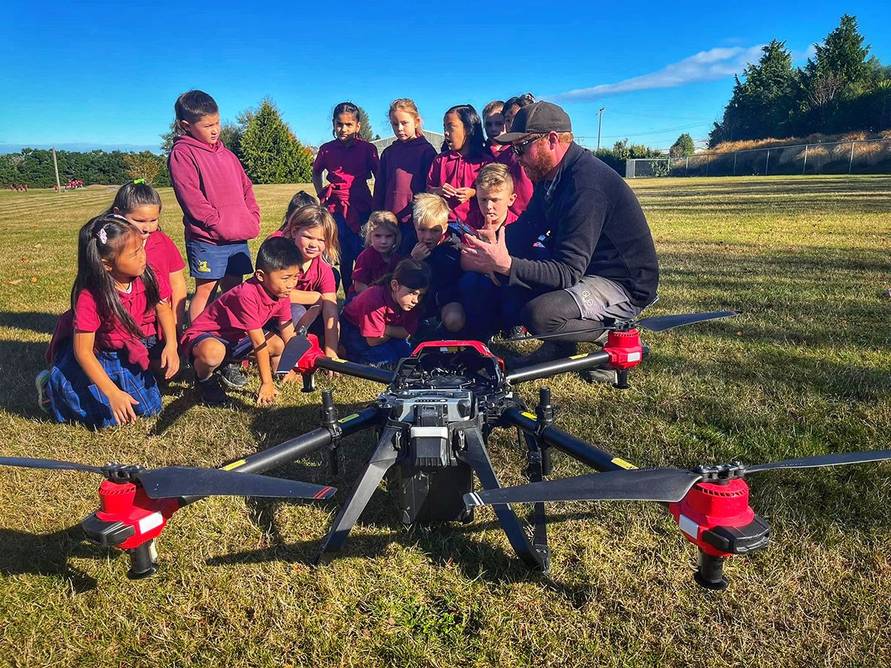- Home
-
Products
- News
- About
- Become a Distributor
Global - English

How can you operate such a massive drone? Why are the blade tips swept back? Why does it have four arms instead of two? Can I ride it? These are the funny but inspiring questions asked by a bunch of kids at 5 to 10 years old, who meet a special drone for the first time that is designed for agricultural use.
This May, an XAG Agricultural Drone was introduced to the Clutha Valley Primary School of New Zealand, showing the students a new style of farming and the technology that farm workers use to grow the food they eat. The drone field day was part of the Otago South River Care Innovation on Farm Project to increase children's understanding of agriculture. The students had the opportunity to interact with industry professionals and learn how crops could be protected by autonomous drones.

Watching the XAG agricultural drone flying is excited for the students
Aerial Agri Solutionz was responsible for the demonstration and ran through a full system description with the children, followed by a breakdown of how a spraying job is conducted and the safety procedures. The students grew fascinated when the XAG Agricultural drone, through a few clicks on the phone, was taking off and flying before their eyes.

Students are learning to how to control the drone with the phone
Drones, robots, artificial intelligence, and unmanned tractors have become the bedrock of food production. As the food system is loomed over the challenge of rural aging, the agriculture industry is seeking for new blood to enter the more technology-based workforce. There has been a growing importance of delivering basic agricultural knowledge and engaging children in interactive experience from a young age.

The staff is introducing the core parts of XAG agricultural drone to the students
In the western countries, agricultural technology STEM activities are being incorporated into school lessons to inspire the new generation. When digital technology is transforming the future of agriculture, an influx of young people with background in agronomy, engineering, computer science, bioscience, etc., is needed to fuel the industry.
Photo credit: Facebook@Clutha Valley Primary School